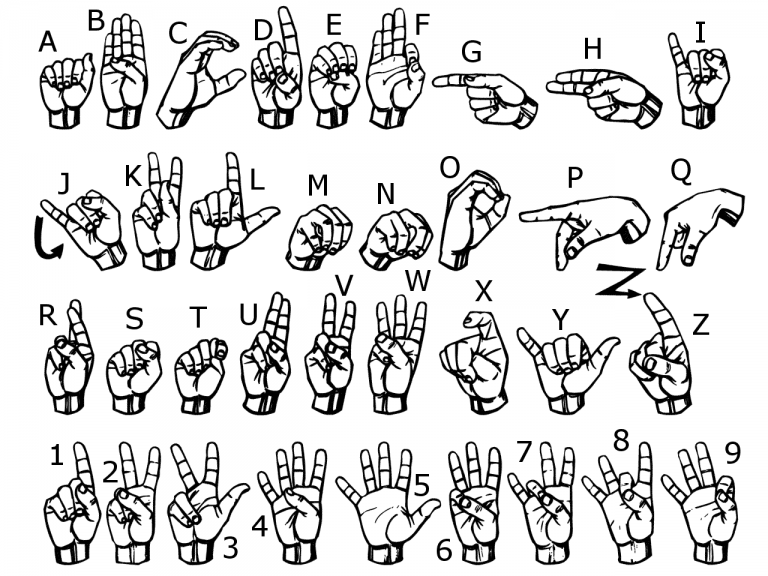This post was created to highlight American Sign Language in honor of September 23rd, The International Day of Sign Languages.
American Sign Language (ASL) is a complete, natural language that has the same linguistic properties as a spoken language, with its own grammar that differs from English. It contains all the fundamental features of a language, with its own rules for pronunciation, word formation, and word order. ASL is articulated by movements of the hands and face. North Americans who are deaf and hard of hearing take up ASL as their key language. It is also used by many people with no hearing problem as well out of interest. There are over 250,000 to 500,000 users of the ASL, including a number of children of deaf adults. Just like another sign language user, ASL users feel inferior to oral language users due to beliefs in the superiority of the latter. ASL use has propagated widely by schools for the deaf and deaf community organizations.
ASL was not invented by any person or a committee. The exact beginnings of ASL are not clear, but its said to have been in use for more than 200 years ago by the linguists. ASL users too have their own ways to ask a question or say a statement, just like another oral language user. ASL users ask a question by widening their eyes, raising their eyebrows and tilting their bodies forward.
English words are spelled out by means of fingerspelling. Each letter in the fingerspelled alphabet, corresponds to a distinct handshape. Fingerspelling is often used to indicate the English word for something or for proper names.
A portion of the letters is extremely natural, with the image for the letter looking precisely like the letter itself. For instance, the letter L is made by expanding the forefinger of the right hand straight up with the thumb pointing to your left. To you, it would seem that a backwards L, however to the individual you’re marking, it looks precisely like the letter L. Something very similar with the letter V, which is really made by giving the “victory” sign that is utilized for any fight or war.
One uses predominantly the hand with the palm confronting the viewer. The hand ought to stay set up. It can marginally float from the mid line when a text is being written noticeably in the air. There ought to be brief delays between words when managing long sentences. Inordinate jewellery or long nails can divert a few people. When spelling abbreviations, the letters are moved along a little circle to show that they are read together.
When you study ASL you learn the elements of the language including:
- Hand-shape
- Palm Orientation
- Place of Articulation
- Movement
- Facial Expression
All of these fundamentals go by the short form HOLME.

Next after the American Sign Language, we have the Brazilian Sign Language. The ASL and the BSL sign languages have a lot of differences when it comes to interpreting each word, the major difference is that, the ASL sign language users expresses the words using two hands, whereas, the BSL Language users use only one hand to interpret the words and sentences.



Having read this I believed it was rather informative. Olympia Meier Bondon